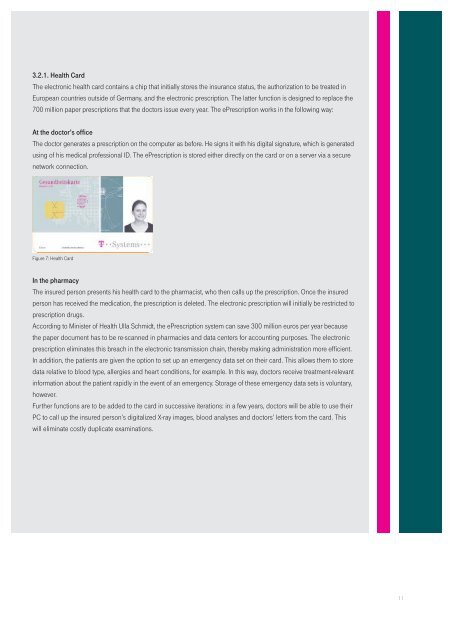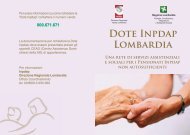White Paper Healthcare Industry in Germany.
White Paper Healthcare Industry in Germany.
White Paper Healthcare Industry in Germany.
You also want an ePaper? Increase the reach of your titles
YUMPU automatically turns print PDFs into web optimized ePapers that Google loves.
3.2.1. Health CardThe electronic health card conta<strong>in</strong>s a chip that <strong>in</strong>itially stores the <strong>in</strong>surance status, the authorization to be treated <strong>in</strong>European countries outside of <strong>Germany</strong>, and the electronic prescription. The latter function is designed to replace the700 million paper prescriptions that the doctors issue every year. The ePrescription works <strong>in</strong> the follow<strong>in</strong>g way:At the doctor’s officeThe doctor generates a prescription on the computer as before. He signs it with his digital signature, which is generatedus<strong>in</strong>g of his medical professional ID. The ePrescription is stored either directly on the card or on a server via a securenetwork connection.Figure 7: Health CardIn the pharmacyThe <strong>in</strong>sured person presents his health card to the pharmacist, who then calls up the prescription. Once the <strong>in</strong>suredperson has received the medication, the prescription is deleted. The electronic prescription will <strong>in</strong>itially be restricted toprescription drugs.Accord<strong>in</strong>g to M<strong>in</strong>ister of Health Ulla Schmidt, the ePrescription system can save 300 million euros per year becausethe paper document has to be re-scanned <strong>in</strong> pharmacies and data centers for account<strong>in</strong>g purposes. The electronicprescription elim<strong>in</strong>ates this breach <strong>in</strong> the electronic transmission cha<strong>in</strong>, thereby mak<strong>in</strong>g adm<strong>in</strong>istration more efficient.In addition, the patients are given the option to set up an emergency data set on their card. This allows them to storedata relative to blood type, allergies and heart conditions, for example. In this way, doctors receive treatment-relevant<strong>in</strong>formation about the patient rapidly <strong>in</strong> the event of an emergency. Storage of these emergency data sets is voluntary,however.Further functions are to be added to the card <strong>in</strong> successive iterations: <strong>in</strong> a few years, doctors will be able to use theirPC to call up the <strong>in</strong>sured person’s digitalized X-ray images, blood analyses and doctors’ letters from the card. Thiswill elim<strong>in</strong>ate costly duplicate exam<strong>in</strong>ations.11




